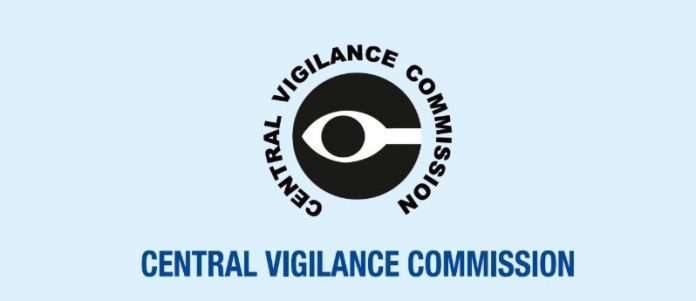This article is submitted by Anshika Agarwal, from VIPS, IP. The article throws light on the office of the central vigilance commission, discussing its role, functions and jurisdiction. The article also discusses issues and challenges encountered by the Commission over time.
Table of Contents
Introduction
“There can be no faith in government if our highest offices are excused from scrutiny — they should be setting the example of transparency” – Edward Snowden
The misuse of powers by the bureaucrats, politicians, government officials and public servants to meet their personal ends can be traced back to the British regime. Prior to 1947, democracy was a myth and corruption was deeply embedded in the roots of the system. The Officials Secrets Act of 1923, introduced by the British government, criminalised revelation of any State-related information to the citizens, aiding the continuation of the malpractices in the country.
Post-independence, Prevention of Corruption Act 1947, was passed by the Government to combat the prevailing corruption thriving in the administration. The Prevention of Corruption Committee also known as Santhanam Committee constituted in 1963, recommended setting up of a Central Vigilance Commission to scrutinise the governmental activities. This was in response to the increasing misuse of powers by the political figures and governmental entities, with an aim to ensure their proper functioning.
The Corruption Perception Index 2019 released by Transparency International, ranks India as the 80th least corrupt country out of the bunch total of 180 countries. The statistics, clearly depict the picture of the existing corruption, mainly attributed to the governmental and corporal entities. This highlights the importance of a centrally coordinated statutory authority in the form of the Central Vigilance Commission keeping a check on the officials and their activities, thereby contributing to good governance.
Central vigilance commission
Central Vigilance Commission is an apex autonomous institution, conferred with the power to review and monitor the governmental activities to ensure a corruption-free environment. The authority has been accorded with a statutory status in 2003 by the Central Vigilance Commission Act.
Formulation and the historical background
The pre-independent era observed the setting up of a Special Police Establishment in 1941, by the Indian Government to keep a check on the corrupt practices during World War II. The continuation of these malpractices even after World War II led to the introduction of Special Delhi Establishment Act in 1946 with extended scope and jurisdiction. All the UTs and the States with the consent of their respective governments came under its jurisdiction. The authority operated at the Central level under the supervision of the Home Ministry.
However, its powers were restricted to investigate offences covered under Prevention of Corruption Act, 1947, selective sections of Indian Penal Code and 16 other central Acts. This called for the need to establish a centralised Police authority called Central Bureau of Investigation, on the recommendations of Santhanam Committee in 1963. The powers of this authority were extended to include probes into frauds related to governmental entities, passport related frauds and major crimes involving professional groups and organisations.
The Central Vigilance Commission, an apex sovereign institution was established in 1964 by a resolution dated 11.2.1964 to assist the governmental institutions in their vigilance scheme. It was in 1997 that the Supreme Court in the case of Vineet Narain & Others vs. Union of India & Another, 1 SCC 226, removed CBI from the purview of the Central Government and placed it under the supervision of CVC. The Court invalidated the provision that mandated the Central Government’s approval for the CBI to conduct investigations against higher officials, to ensure an unbiased probe.
The Commission was granted with the statutory status by the ordinance of 1998 that turned into Central Vigilance Act, 2003. It extended the scope of powers exercised by the Commission and made it a supervisory authority to the CBI.

Constituent members
Section 3 of the CVC Act, 2003 provides for the structure of the Commission. It is chaired by a Central Vigilance Commissioner who is assisted by two other Vigilance Commissioners as the members. The chairperson and the members should either have held a civil post in the Union or a position in the government-owned or controlled corporation. The person to be appointed should have expertise in the matters of banking, finance, investigations and administrations. A Secretary may be appointed by the Government if the Commission specifies the need for it by such a regulation.
Appointment and removal
The appointments to the Commission (Section 4) are made by the President on the recommendations of a committee comprising the Prime Minister acting as the chairperson and the Home Minister and the Leader of Opposition as the members. If in case the House lacks such a leader, then the leader of the largest group in the opposition would be deemed as the member of the Committee. The section further provides that any kind of vacancy in the Committee would not render these appointments invalid.
The President is further authorised, by the virtue of Section 6, to remove the members and the chairperson of the Commission from the office in the cases of insolvency, a conviction in an offence involving moral turpitude, incapability in holding the post or having an additional financial interest or employment. Such removal is based on the grounds of misbehaviour or incapacity proved by the Supreme Court. The employment of the profits or benefits by the members, to their personal interests, arising out of Government contract, of which the members are a part of, would constitute misbehaviour.
Role and functions
The functions and powers of the Commission with respect to CBI and vigilance are envisaged under Section 8 of the Act. It is empowered to supervise the investigations led by the CBI in matters involving the commission of offences under the Prevention of Corruption Act, 1988 or offences committed by public servants under CRPC, 1973. The Commission too can conduct a probe into these matters in case a Government or a State-controlled corporate employee is involved, on a reference made by the Central Government. It is also entitled to investigate into the complaints made against public officials alleging the commission of these offences.
It directs the functioning of the CBI by keeping a close check on the progress of the investigations conducted, thereby ensuring proper discharge of its duties. The Commission is further authorised to monitor the administration of governmental Departments, Ministries and corporations. However, the supervision exercised should not interfere with the administration of these institutions. The Central Government or any of its institutions can refer to the Commission in order to seek its advice over matters financial, banking and administrative matters.
Main issues and controversies
Over the years, the office of the Chief Vigilance Officers and the Commission has encountered issues concerning transparency and independence from the executive in the exercise of its powers.
Appointment of PJ Thomas’s controversy
The subject of the appointment of the CVO became a controversy in 2010 by the appointment of PJ Thomas as the Chief Vigilance Officer. The appointment was recommended by the then Prime Minister Manmohan Singh and the Union Home Minister as the members of the High Powered Committee constituted for this purpose. However, the Leader of the Opposition Sushma Swaraj questioned such an appointment citing the association of PJ Thomas with the Palmolein Oil Import Scam in the years 1991- 1992. A charge sheet was filed against him, featuring him as the eighth accused, by the Anti Corruption Bureau.
Public Interest Litigations regarding the same were filed by the Centre for Public Litigation in the Supreme Court. The Court quashed the appointment made by the HPC on the grounds that the proper considerations were not made while making such an appointment. The Court also placed a sense of moral obligation on the Committee to take into the considerations the objections made by the members based on reasonable grounds. Thus the unanimity of the Committee is not a necessary requirement but a moral obligation. The judgement also indicated the need for transparency as a qualification for the post of CVO.
Public sector banks under the scope of vigilance of CVC
The RBI in 2017, sanctioned necessary approvals allowing CVC to conduct investigations against the employees of the private sector banks. This was followed by the Supreme Court’s decision in 2016 that included employees of the private banks operating under the authority of RBI, in the definition of “public servants” under the Prevention of Corruption Act, 1988. This was done to ensure smooth probity in the graft cases in private banks.
Cases
Case of Sumit Kumar Banerjee v. State of West Bengal
In the case of Sumit Kumar v. State of West Bengal, 1980 AIR 1170, charges were framed by the Enquiry Officer against the appellant, who was a member of Indian Administrative Services. The report was consulted with the State Vigilance Commission. Upon considerations, the Disciplinary Authority( State Government), imposed punishments on the appellant. In an appeal to the Supreme Court, the appellant contended that the ultimate findings and the conviction cannot be based on reports of the Enquiry Officer consulted with the State Vigilance Commission, having no statutory authority.
The Supreme Court held that the punishment imposed on the appellant was based on the findings of the Disciplinary Committee. The mere consultation of the authority with the Vigilance Officer does not render it invalid.
The judgement gathered a plethora of criticisms from the jurists. The jurists were of the opinion that the process of consultation by the State violated the provisions of natural justice. The ultimate findings of the State were influenced by the Vigilance Commission’s opinion which went against the principles of natural justice. The jurists further opined that taking no notice of the findings submitted by the Commission would render the purpose of its establishment meaningless.
A.R. Antulay’s case
In the case of R. S. Nayak vs. A. R. Antulay, 1984 AIR 684, the appellant filed a complaint approved by the sanction of the Governor, against the then Chief Minister of Maharashtra( respondent ). The complaints alleged the respondent to be guilty of misallocation of public funds and corruption. However, the respondent resigned on the same date and continued to serve as an MLA. The respondent contended that a sanction as provided under Section 6 of the PCA, 1947 is necessary to proceed against a public servant.
The two main issues raised in front of the Court were:
- Whether an MLA can be called a public servant as under Section 21, IPC?
- Whether sanction as provided under Section 6 of the 1947 Act, a necessary requisite to proceed against MLA?
The Supreme Court, by looking at the historical evolution of Section 21 and closely examining the contextual definition of a “public servant”, concluded that an MLA cannot be construed as a public servant. The Court further held that upon resignation from the post of CM, the respondent ceased to be a public servant. The provisions of Section 6 of the 1947 Act cannot be attracted as when the offence was committed, the respondent was a public servant but when the Court was called to take the notice of it, he resigned. The case became a landmark as it was for the first time that an ex-CM was prosecuted on the basis of a private complaint.
Conclusion
The corruption measures and the attempt of the Central Government to build transparency by establishing a centralised, independent apex institution have witnessed evolutions over time. From an executive organ, established by a governmental resolution to a statutory authority by the virtue of CVC Act, 2003, the powers conferred upon it have expanded tremendously. The Government has extended the powers and authority to such an extent that the scope of the vigilance of the Commission now includes private sector banks. The issues encountered by the Commission have been dealt with by the legislators and Courts to ensure transparency and efficient corruption-free administration. Thus, a huge evolution can be seen in the powers and jurisdiction of the Commission since the time of its formation.
References
- https://www.brainyquote.com/quotes/edward_snowden_551869
- https://tradingeconomics.com/india/corruption-rank
- https://indiankanoon.org/doc/1203995/
- http://legislative.gov.in/sites/default/files/A2003-45.pdf
- http://legislative.gov.in/sites/default/files/A2003-45.pdf
- http://legislative.gov.in/sites/default/files/A2003-45.pdf
- http://legislative.gov.in/sites/default/files/A2003-45.pdf
- https://daily.bhaskar.com/news/NAT-IDP-palmolein-oil-import-scam-the-case-against-pj-thomas-1902746.html
- https://www.thehindu.com/opinion/lead/Lessons-from-the-Thomas-verdict/article12943837.ece
- https://www.indiacode.nic.in/bitstream/123456789/2379/1/A1923-19.pdf
- http://www.code.mp.gov.in/WriteReadData/Pdf/Act_1947_0002_Pdf_F173_English.pdf
LawSikho has created a telegram group for exchanging legal knowledge, referrals and various opportunities. You can click on this link and join:
 Serato DJ Crack 2025Serato DJ PRO Crack
Serato DJ Crack 2025Serato DJ PRO Crack










 Allow notifications
Allow notifications



